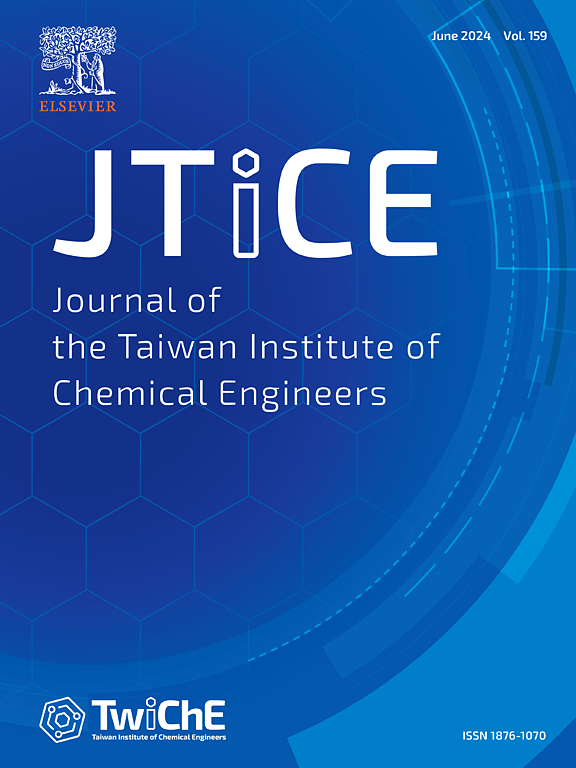基于人工智能(AI)代理模型的硫磺回收装置高级过程控制
IF 6.3
3区 工程技术
Q1 ENGINEERING, CHEMICAL
Journal of the Taiwan Institute of Chemical Engineers
Pub Date : 2025-04-13
DOI:10.1016/j.jtice.2025.106119
引用次数: 0
摘要
改进克劳斯法是从酸性气体中回收单质硫的主要技术。这个过程包括两个步骤。第一步,在反应炉中将一部分H2S氧化为SO2;第二步是将剩余的H2S与SO2在较低的温度下在催化剂上反应。最大限度地提高硫回收效率(SRE)的主要操纵变量(MVs)是燃烧空气流量和转炉入口气体温度。然而,两种mv都遇到了控制变量(CV)的过程增益反转问题,CV指的是出口总硫。此外,过程控制受到气流速率和尾气分析仪之间的显著时间延迟的限制。方法建立人工智能(AI)代理模型,以预测层内预测总硫的总和为最小值,对mv的运动进行评价。该方法不需要对未来扰动数据进行假设。在现场作业中,尾气中的特定H2S/SO2由燃烧空气维持,这对减少总硫的效率很低。通过先进的过程控制,与现场作业相比,总硫含量可从1.6% ~ 1.4%降低约12%。本文章由计算机程序翻译,如有差异,请以英文原文为准。

Advanced process control for sulfur recovery units by artificial intelligence (AI) surrogate model
Background
The modified Claus process is a major technology used for the recovery of elemental sulfur from acid gases. The process consists of two steps. In the first step, a portion of H2S is oxidized to SO2 in a reaction furnace; the second step comprises the reaction of the remaining H2S with SO2 at lower temperatures over a catalyst. The major manipulated variables (MVs) to maximize the sulfur recovery efficiency (SRE) are the combustion air flow rate and inlet gas temperature for the converter. However, both MVs encounter a process gain reverse problem for the controlled variable (CV), which refers to the outlet total sulfur. In addition, process control is limited by the significant time delay between the air flow rate and tail gas analyzer.
Methods
In this study, an artificial intelligence (AI) surrogate model was built and the movement of the MVs was evaluated using to minimize the sum of the predicted total sulfur in the prediction horizon. The assumption of future disturbance data is not necessary for the proposed approach.
Significant findings
In field operations, a specific H2S/SO2 in the tail gas is maintained by the combustion air that is inefficient to minimize total sulfur. The total sulfur content can be reduced by approximately 12 % from 1.6 %–1.4 % compared with that of field operations by the advanced process control.
求助全文
通过发布文献求助,成功后即可免费获取论文全文。
去求助
来源期刊
CiteScore
9.10
自引率
14.00%
发文量
362
审稿时长
35 days
期刊介绍:
Journal of the Taiwan Institute of Chemical Engineers (formerly known as Journal of the Chinese Institute of Chemical Engineers) publishes original works, from fundamental principles to practical applications, in the broad field of chemical engineering with special focus on three aspects: Chemical and Biomolecular Science and Technology, Energy and Environmental Science and Technology, and Materials Science and Technology. Authors should choose for their manuscript an appropriate aspect section and a few related classifications when submitting to the journal online.

 求助内容:
求助内容: 应助结果提醒方式:
应助结果提醒方式:


